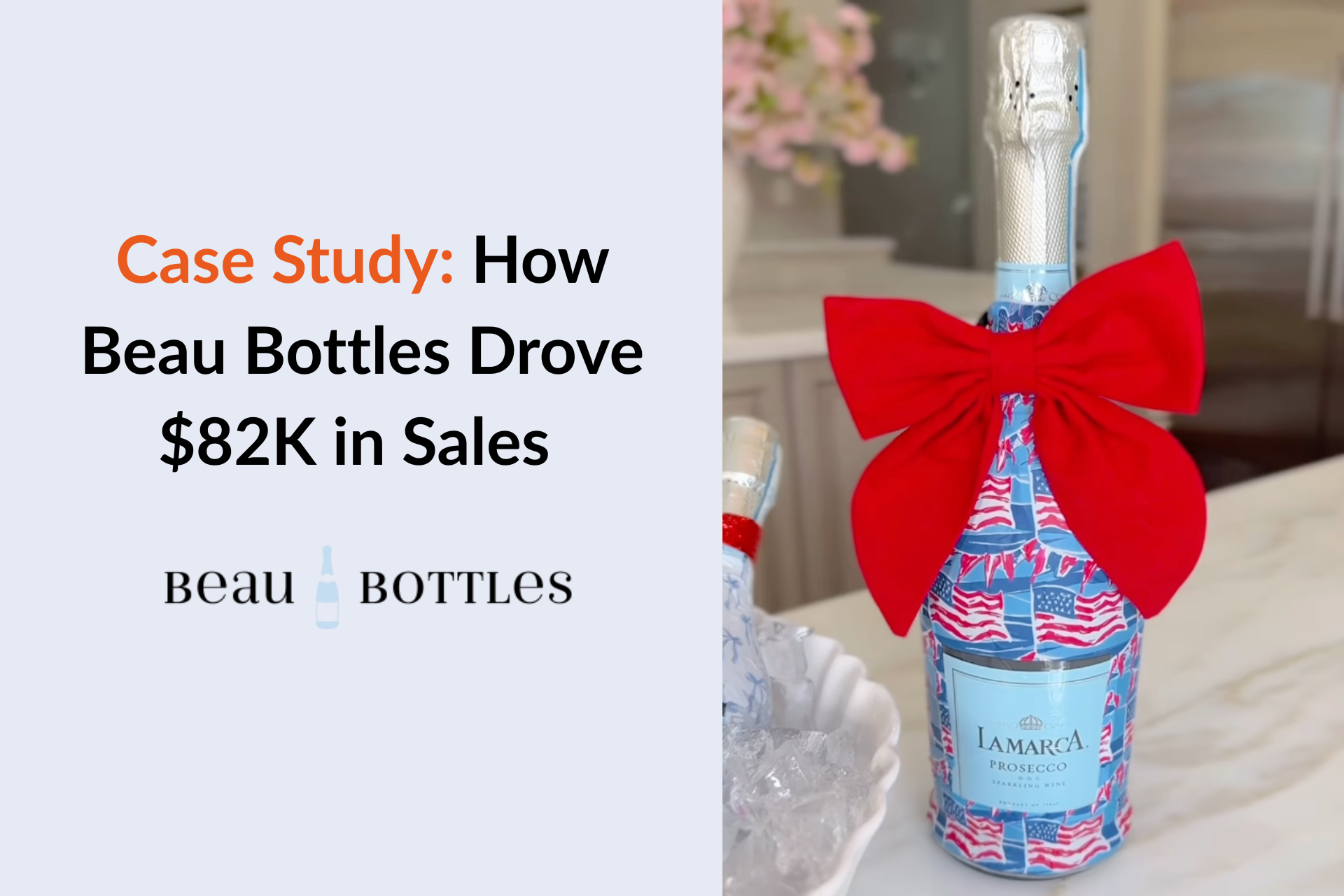





Linqia, once a popular choice for influencer marketing, has lately faced some backlash for a few reasons. Users often point to its limited campaign customization options, lack of transparency in reporting, and poor customer support as key frustrations. As a result, many marketers are searching for alternatives that offer more flexibility, better transparency, and enhanced user experience.
When it comes to finding the best alternative, Influencer Hero stands out due to its all-in-one influencer marketing capabilities, comprehensive reporting, and seamless integrations. The platform not only helps streamline influencer outreach but also provides detailed analytics to track campaign success, making it a top choice for D2C brands and marketers.
In 2025, the influencer marketing landscape continues to evolve, with platforms like Upfluence and Grin gaining attention for their robust features and user-friendly interfaces. These platforms cater to the growing demand for performance-driven marketing solutions, allowing businesses to run successful, scalable campaigns.
Below, we’ll explore the top 10 Linqia alternatives to consider when looking for the right fit for your influencer marketing strategy.
Let’s discover three reasons why some users might be seeking Linqia alternatives:
A common pain point for users is the complex onboarding process and the challenges of accessing the platform. Many users express frustration with having to sign up for a platform just to manage contracts, payments, and content submission. This process not only feels tedious but can slow down campaign execution.
Several reviews highlight the difficulties surrounding content submission and uploading. While Linqia's customer support team is praised for their responsiveness, users often find the process of uploading content to be less than seamless. For example, users have noted that the system is not as intuitive as they would prefer, leading to delays in content submissions and potential campaign disruptions.
Another challenge many users face is the delay in updates or changes to submitted content. While Linqia's team works to resolve issues quickly, users report that when they submit content or make changes, the updates do not always take effect immediately.
New users often find the platform confusing and difficult to navigate. One common complaint is that Linqia’s interface can be overwhelming for first-time users, leading to a steeper learning curve than expected. This can result in frustration and inefficiencies as users try to familiarize themselves with the platform’s tools and functionalities.
Our comparison focuses on several key aspects:
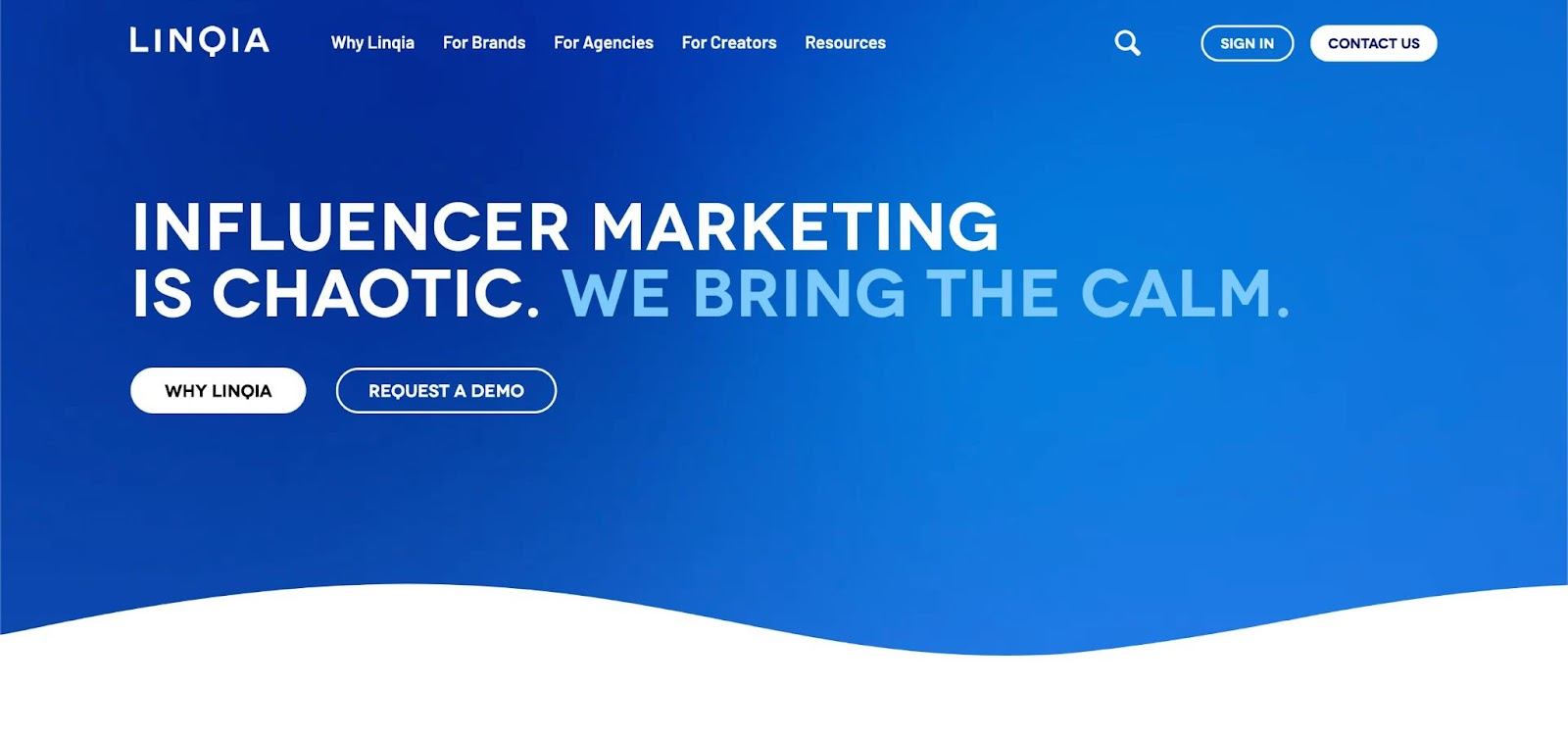
Platform Coverage: Instagram, TikTok, YouTube, Facebook, Pinterest
Best For: Mid-to-enterprise brands seeking a performance-driven influencer platform that combines managed services with technology to scale campaigns, optimize ROI, and integrate influencer content into paid media channels.
Pricing: Publicly available pricing information is limited; Linqia largely operates on quote-based enterprise plans. Some third-party sources state:
Reviews: 4.8 / 5.0 (G2)
Ease of Use (UX/UI): Users say Linqia’s dashboard is clean and consolidated, simplifying campaign workflows such as briefs, asset review, and approvals. However, there is a learning curve, advanced filters, campaign configuration, and analytics require onboarding and guidance.
Customer Support: Linqia provides managed services and often assigns a dedicated account or talent partner for support and campaign strategy. Users note support is responsive and helpful, though custom requests can sometimes take longer to resolve.

Platform Coverage: Instagram, TikTok, YouTube, Facebook, Pinterest, Snapchat, X, Twitch
Best For: Influencer Hero is best for growing D2C and eCommerce brands looking for an all-in-one solution to scale influencer campaigns, automate workflows, and maximize ROI. It’s especially suited for teams managing large-scale seeding or affiliate programs who want deep insights and multi-platform support.
Pricing: (Plans are monthly and scalable.)
Reviews: 5.0 / 5.0 (Capterra)
Ease of Use (UX/UI): Influencer Hero is known for its clean, intuitive interface and user-friendly workflows. With a streamlined dashboard, drag-and-drop campaign setup, customizable email templates, and automated workflows, teams can save hours weekly. The platform’s Chrome extension makes real-time influencer research seamless, helping even non-technical teams get started quickly.
Customer Support: Customer support is one of Influencer Hero’s strongest differentiators. Every plan includes a dedicated account manager from day one, with the option for tailored strategy consultations. The platform provides 24/7 real-human live chat, responsive email support, and a comprehensive Help Center with written and video tutorials. Pro plan users also gain access to a private Slack channel for continuous, faster communication.
While Linqia emphasizes a managed-service, enterprise-first model with opaque, quote-based pricing (often starting at $25,000), Influencer Hero provides transparent monthly plans starting at $649, making it far more accessible for growing eCommerce and D2C brands. Linqia is best suited for larger companies with big budgets that want a hands-off approach, whereas Influencer Hero empowers teams with a self-serve platform that balances automation with human support.
Another key difference lies in usability and flexibility. Linqia users often note a steeper learning curve, while Influencer Hero’s intuitive dashboard and AI-driven automations let teams launch and scale campaigns in hours. With features like influencer storefronts, real-time Chrome extension insights, and built-in affiliate tools, Influencer Hero stands out as a modern, ROI-focused platform that democratizes influencer marketing for brands of all sizes.
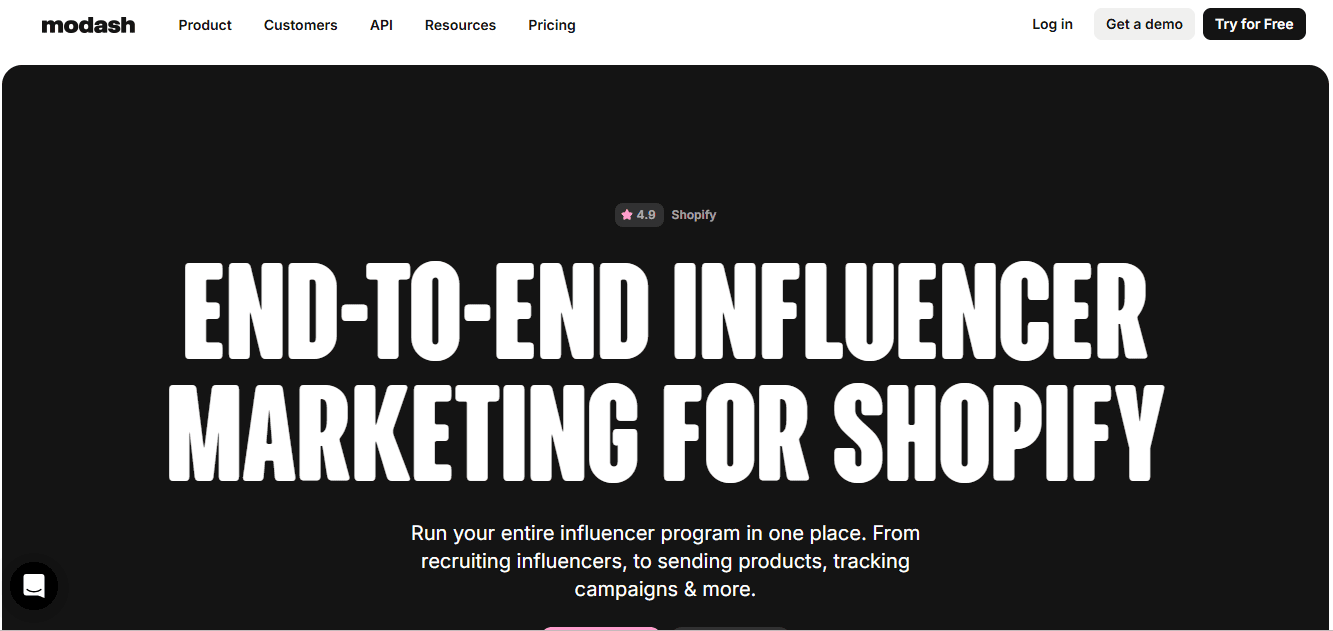
Platform Coverage: Instagram, TikTok, YouTube, and profile recognition for X, Snapchat, and other platforms.
Best For: Modash is best for eCommerce and D2C brands (or marketing teams) that want a powerful discovery and campaign-tracking platform focusing on Instagram, TikTok, and YouTube creators, especially when they want deep data on audience metrics and performance
Pricing: Modash offers free trials to both their Essentials and Performance plan.
Reviews: 4.9 / 5.0(Capterra.com)
Ease of Use (UX/UI): Many users praise Modash for being intuitive, well-organized, and fast to onboard. Some note that parts of the interface (especially for newer users) can feel a bit technical, but overall it’s considered clean and efficient.
Customer Support: Users frequently highlight that Modash has responsive and helpful customer support, often paired with dedicated success partners.Some reviewers do mention occasional limits or delays in more advanced support or feature requests.
Linqia typically operates as a managed-service or enterprise-oriented platform that requires larger commitments and pricing custom quotes, whereas Modash offers more transparent pricing tiers (Essentials, Performance, Enterprise) and is more accessible to growth-stage brands.
Linqia is optimized for brands wanting hands-off influencer program management, while Modash empowers marketers to control more of the process, from discovery to payout, with built-in tools.
Where Linqia may excel in fully managed campaigns with high-touch service, Modash provides more agility, data control, and self-serve capabilities, making it a strong option for brands that want autonomy and analytics depth without sacrificing support. If your team wants deeper creative control and metrics visibility, Modash is often more favorable; if you’d rather outsource much of the program management, Linqia might appeal more.
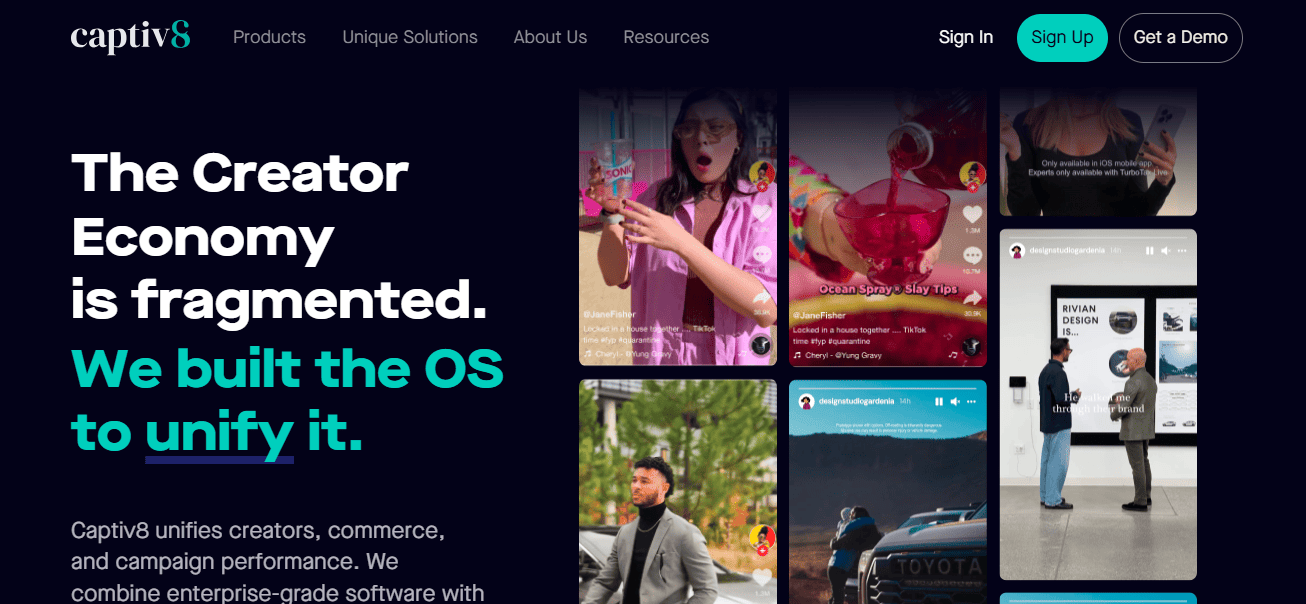
Platform Coverage: Captiv8 supports influencer campaigns across Instagram, YouTube, TikTok, Facebook, Twitter, and Pinterest.
Best For: Captiv8 is best for large enterprises and agencies that want advanced discovery, competitive tracking, and detailed performance reporting. It’s especially suited for organizations managing multi-market campaigns with significant budgets.
Pricing:
No monthly or customizable plans are available; pricing is rigid and enterprise-focused
Reviews: 4.6 / 5.0 (G2)
Ease of Use (UX/UI): Users highlight that Captiv8’s platform is powerful but complex, offering deep customization and detailed reporting. However, the interface can feel overwhelming and less intuitive for smaller teams or beginners.
Customer Support: Some users report responsive support during onboarding, but many reviews mention poor customer service, delayed responses, and unresolved issues with both payments and account management.
Linqia and Captiv8 both focus on enterprise-level influencer marketing, but their approaches and pricing models differ.
Linqia emphasizes managed services and a performance-driven model, with pricing estimated to start around $25,000 (though exact figures are opaque). Captiv8, on the other hand, requires an annual $25,000 contract with a $3,000 onboarding fee, plus an additional $20–30K per month for storefront and affiliate features.
While Linqia is positioned as a performance-first platform with strong ROI measurement and integrated paid media options, Captiv8 appeals to enterprises seeking advanced discovery, competitor tracking, and customizable reporting. However, Captiv8’s rigid pricing and support issues make it less accessible for smaller or mid-sized brands, whereas Linqia—though expensive—may offer a more service-driven partnership.
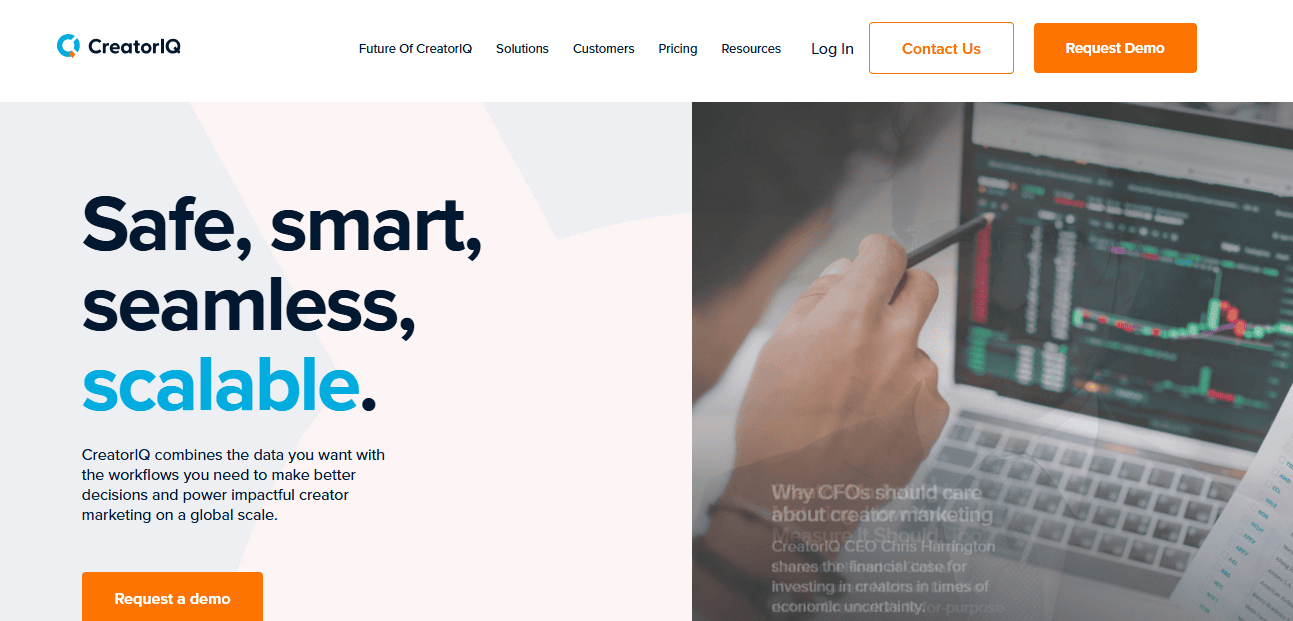
Platform Coverage: Instagram, TikTok, YouTube, Facebook, Pinterest, Twitch, X.
Best For: CreatorIQ is best for large brands and enterprises that need an end-to-end influencer marketing platform with deep data integrations, advanced reporting, and enterprise-grade support. It’s especially strong for teams managing global, multi-platform campaigns with complex needs.
Pricing:
Reviews: 4.6 / 5.0 (G2)
Ease of Use (UX/UI): Users praise its robust dashboards and clean visuals, though setup and learning the advanced features can take time. Once onboarded, teams find the workflows and reporting highly effective.
Customer Support: CreatorIQ is known for its excellent support, providing dedicated implementation managers and customer success teams. Strategic input is often included, helping brands with onboarding, campaign planning, and quarterly reviews.
Discover our top 10 CreatorIQ alternatives to elevate your influencer marketing strategy with more intuitive tools, flexible pricing, and scalable performance.
Linqia and CreatorIQ both serve the enterprise segment but with different approaches. Linqia focuses on managed services and a performance-based pricing model, with estimates suggesting campaigns often start around $25,000 but without transparent public pricing. CreatorIQ, on the other hand, is a fully software-driven solution, offering clear annual tiers starting at $35,000/year, with additional costs for add-ons like Creator Connect.
Where Linqia emphasizes campaign execution and ROI optimization through managed partnerships, CreatorIQ equips teams with advanced tools, real-time API data, and customizable reporting for brands that want more control in-house. Brands looking for autonomy, deep analytics, and scalability often lean toward CreatorIQ, while those preferring a more service-driven approach may find Linqia a better fit.
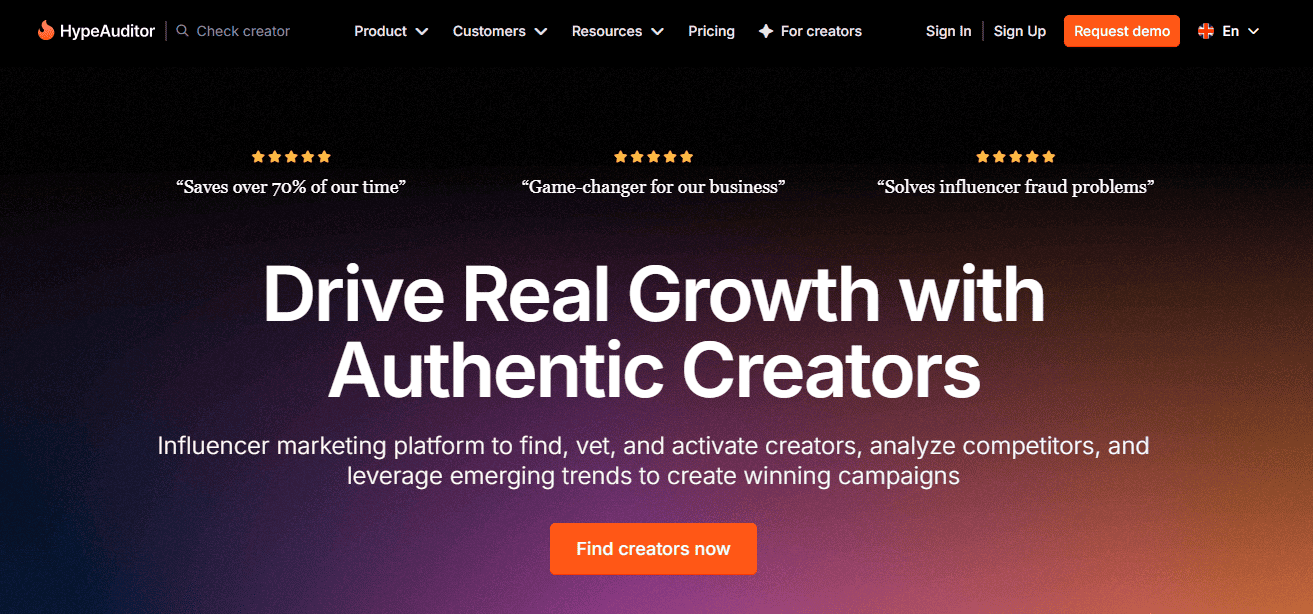
Platform Coverage: Instagram, TikTok, YouTube, Twitch, X (Twitter), Snapchat
Best For: HypeAuditor is best for brands and agencies seeking advanced influencer discovery and analytics tools, with a strong focus on authenticity, brand safety, and ROI measurement. It’s particularly useful for teams that want customizable pricing and flexibility.
Pricing: Custom plans based on usage. Flexible contract terms depending on platform access, campaign volume, and number of reports.
Reviews: 4.5 / 5.0 (G2)
Ease of Use (UX/UI): Users say the dashboards are powerful but can be overwhelming at first. Once familiar, the filters and AI-powered tools make influencer discovery efficient.
Customer Support: HypeAuditor provides onboarding and responsive support, though some users mention that new teams may need extra guidance to navigate its breadth of features.
Linqia and HypeAuditor both focus on performance-driven influencer marketing, but their models differ. Linqia is a managed-service platform with pricing estimated to start around $25,000, offering enterprise support and campaign execution. HypeAuditor, in contrast, operates on customizable software plans starting near $10,000/year, giving brands more flexibility and control over their campaigns.
Linqia emphasizes ROI through managed partnerships and integrated paid media, while HypeAuditor empowers brands with AI-powered discovery, fraud detection, and analytics tools to run campaigns in-house. For brands that value flexibility, transparency, and advanced discovery features, HypeAuditor offers a more adaptable alternative, whereas Linqia is better suited for enterprises preferring a fully managed approach.
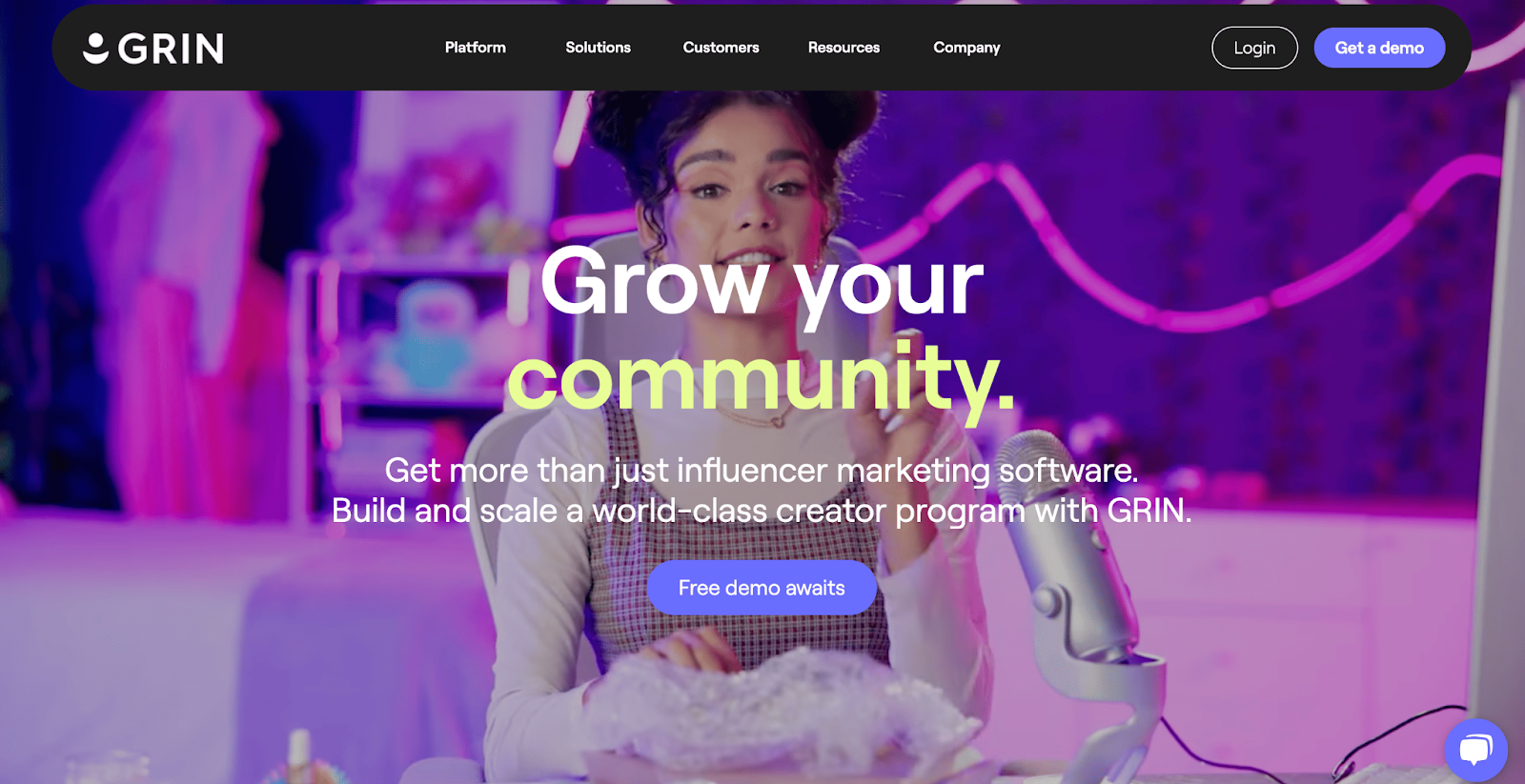
Platform Coverage: Instagram, TikTok, YouTube, X, Twitch, Snapchat
Best For: GRIN is best for eCommerce and DTC brands that want an all-in-one influencer marketing platform with deep native integrations into Shopify, WooCommerce, Magento, and other product-based systems. It’s especially valuable for teams running large-scale seeding, affiliate, and UGC-driven campaigns.
Pricing: Plans start at $25,000 per year, with monthly payments available and a required 12-month commitment; typical monthly costs range from $2,500 to over $10,000 depending on usage, though pricing transparency may vary based on selected features.
Reviews: 4.5 / 5.0 (G2)
Ease of Use (UX/UI): Users praise GRIN’s unified dashboard that centralizes discovery, gifting, outreach, and payments. However, some note occasional bugs, slow load times, and glitches that can interrupt workflows.
Customer Support: Support quality can vary, some users find GRIN’s onboarding and strategists helpful, while others mention delayed responses and unresolved tickets. Optional program strategist services provide more hands-on guidance.
Check out our guide on the top 10 GRIN alternatives to find platforms that can elevate your influencer marketing strategy.
Linqia and GRIN both target brands with sizable influencer budgets, but their models differ. Linqia operates as a managed-service platform with pricing estimated to begin around $25,000, though its plans are opaque and vary by scope. GRIN, by contrast, is software-first with transparent pricing starting near $25,000/year (or ~$2,500/month) and requires annual commitments, offering brands more hands-on control.
While Linqia emphasizes performance-driven campaigns with managed execution, GRIN is built for brands that want autonomy and native eCommerce integrations. Its deep Shopify and Magento connections, UGC library, and unlimited influencer partnerships make it a strong choice for product-centric brands wanting clear ROI and streamlined operations in-house.
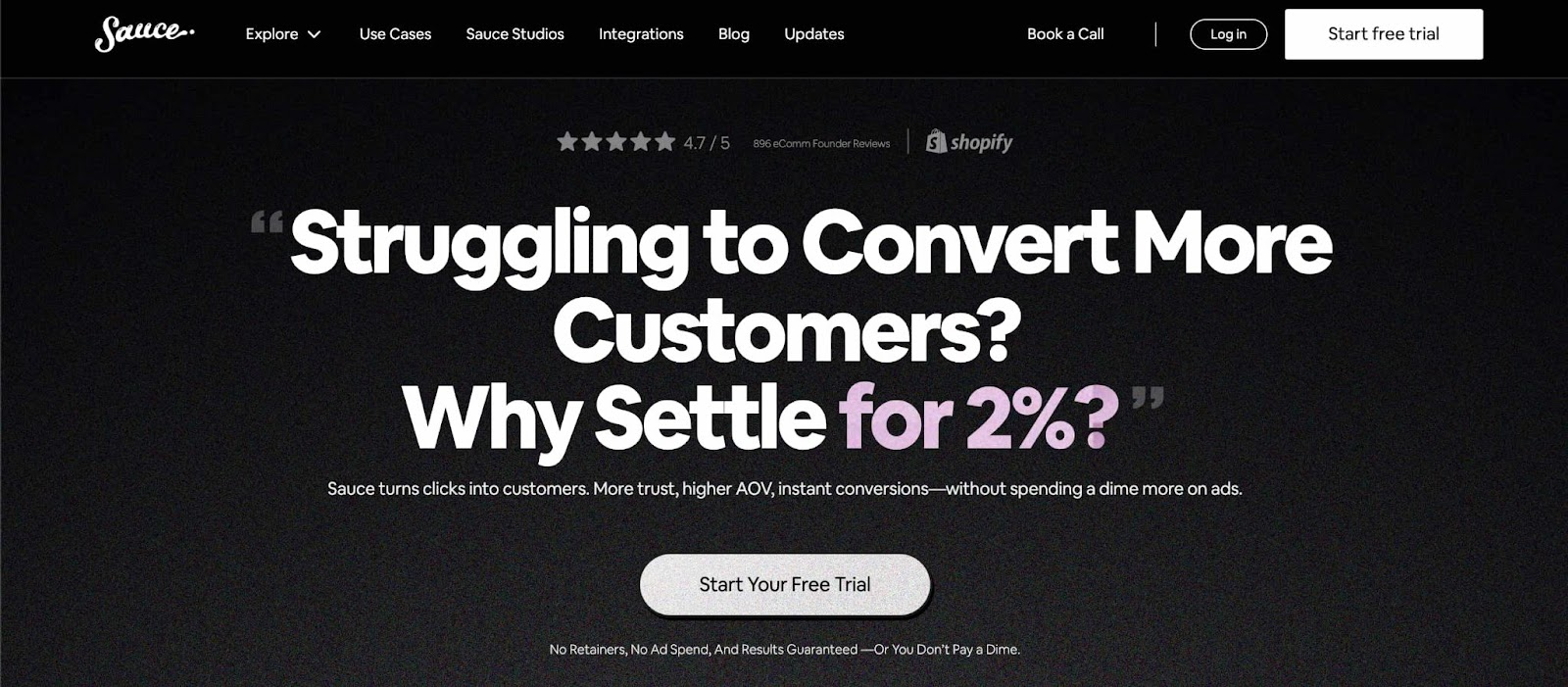
Platform Coverage: Integrates with Instagram and TikTok
Best For: AddSauce is best for eCommerce brands that want to merge influencer marketing with social commerce, making TikTok, Instagram, and UGC directly shoppable. It’s ideal for Shopify and multi-platform merchants focused on boosting conversions through authentic customer and influencer content.
Pricing:
Free 7-day trial available on all plans.
Reviews: 4.6 / 5.0 (Shopify App Store)
Ease of Use (UX/UI): Users highlight its zero-code setup and quick implementation, making it easy to embed shoppable galleries and video content. The interface is highly visual and intuitive, designed to help brands turn browsing into buying with minimal effort.
Customer Support: Merchants report responsive and helpful live chat support, especially during onboarding. Many also mention the value of its free trial for testing features before committing to a paid plan.
Linqia and AddSauce serve different ends of the influencer marketing spectrum. Linqia is positioned as an enterprise-grade, performance-driven influencer platform focused on managed services, predictive discovery, and amplifying influencer content into paid media. Its pricing is largely estimated, with reports suggesting starting costs around $25,000+ per campaign or feature, making it best suited for mid-to-enterprise brands with larger budgets and complex multi-market strategies.
AddSauce, on the other hand, is a social commerce-first tool designed for scalable eCommerce brands. With transparent monthly pricing from $50 to $600, plus enterprise options starting at $2,000, it’s far more accessible to small and medium businesses. Brands should choose Linqia if they prioritize managed services and large-scale campaign optimization, and AddSauce if they want a plug-and-play solution that emphasizes social shopping and conversion growth.
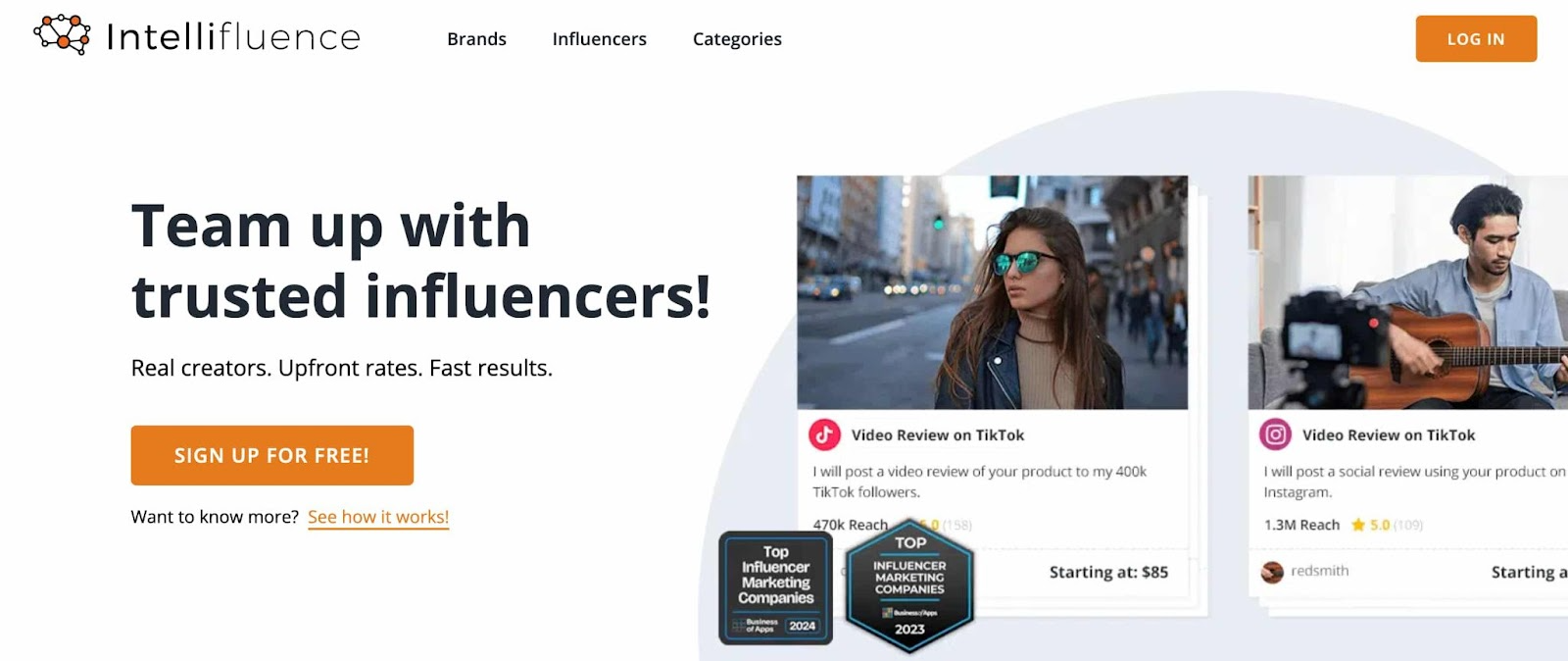
Platform Coverage: Intellifluence is a budget-friendly choice for small to mid-sized brands or marketers who want access to a large creator marketplace and campaign tools without committing to enterprise-level spend.
Best For: Intellifluence is best for small to medium-sized brands that want a flexible, scalable influencer marketing solution without long-term contracts. It’s particularly effective for working with micro- and nano-influencers, generating UGC or reviews, and testing campaigns across multiple platforms.
Pricing:
Note: A 10% transaction fee applies to cash payments processed through the platform.
Reviews: 0.0 / 5.0 (G2)
Ease of Use (UX/UI): Users generally describe Intellifluence as intuitive, with a clean dashboard and simple workflows for outreach and campaign management. However, some mention minor bugs and that the mobile version is not as smooth as the web platform.
Customer Support: The support team is praised for being responsive and offering helpful tutorials and resources for new users. That said, campaign approvals and dispute resolutions can sometimes take longer than expected.
Linqia positions itself as an enterprise-grade, performance-driven platform with managed services, AI-powered discovery, and robust analytics. Its pricing is largely estimated, with reported starting points around $25,000+ per campaign or feature, making it more suitable for larger brands with complex strategies and higher budgets.
By contrast, Intellifluence is built for accessibility and flexibility. With a free plan and paid tiers starting at $99 per month, it’s designed for small to medium businesses that want to experiment with influencer marketing at a lower cost. It focuses on scale through its large opt-in influencer network and transparent pricing, though with simpler reporting and analytics compared to enterprise platforms.
Brands should choose Linqia if they want managed services and enterprise-level capabilities, and Intellifluence if they prioritize affordability, flexibility, and working with micro-influencers across diverse platforms.

Platform Coverage: Shopify, Salesforce, Adobe Commerce, WooCommerce, HubSpot, Zapier, and other major marketing and eCommerce platforms.
Best For: TrueLoyal is best for brands that want to centralize influencer, creator, and customer content into one platform. It’s particularly valuable for companies focused on building authentic brand advocacy, scaling UGC, and activating social proof across product pages, emails, and campaigns.
Pricing: Pricing is not publicly disclosed. TrueLoyal operates on a custom pricing model tailored to brand size and needs, with demos required for a detailed proposal.
Reviews: 4.8 / 5.0 (Capterra)
Ease of Use (UX/UI): Users highlight the convenience of managing all creator, influencer, and customer content in one spot, making it easy to activate assets quickly. The workflows for briefs, approvals, and publishing are streamlined, though some brands note onboarding is essential to maximize integrations.
Customer Support: The platform provides demo-based onboarding and strategic guidance to help brands design effective ambassador programs. Some users appreciate access to strategist recommendations when identifying authentic influencers.
Discover our top 10 TrueLoyal (previously Tint) alternatives to explore the best options for streamlining your influencer campaigns
Linqia emphasizes enterprise-scale, performance-driven campaigns with predictive discovery, managed services, and advanced analytics. Its pricing is largely estimated, with reported starting points around $25,000+ per campaign or feature. TrueLoyal, in contrast, focuses on authenticity by prioritizing creators and customers who already advocate for a brand. While its pricing is not publicly disclosed, the emphasis is on brand advocacy and UGC activation rather than large-scale paid influencer campaigns.
Brands should choose Linqia if they want enterprise-level managed services and deep performance optimization, and TrueLoyal if they value authentic ambassador programs, social proof on product pages, and seamless UGC-driven collaboration.

Platform Coverage: Instagram, TikTok, YouTube, X , Twitch, Pinterest, WordPress blogs.
Best For: eCommerce brands on Shopify or Amazon looking to run influencer and affiliate campaigns that directly tie to sales performance. It’s particularly strong for mid-to-large businesses that want to convert their customer base into brand advocates while managing campaigns end-to-end.
Pricing: Upfluence offers annual contracts with the following pricing.
Reviews: 4.6 / 5.0 (G2)
Ease of Use (UX/UI): Users describe the platform as robust but slightly complex at first, given its wide feature set. Once configured, workflows like outreach, payments, and tracking are streamlined and efficient.
Customer Support: Upfluence offers onboarding and dedicated account managers for most plans, which many users highlight as helpful in mastering setup. Some reviews mention slower support responsiveness during peak times, but overall feedback on guidance and resources is positive.
Linqia is a performance-driven platform built around guaranteed outcomes, precise attribution, and ROI tracking. It primarily targets larger enterprises that value measurable business impact, with pricing largely enterprise-level and quote-based, starting around $25,000 according to third-party sources.
Upfluence, on the other hand, is more eCommerce-focused, offering native integrations with Shopify, WooCommerce, and Amazon alongside customer-to-influencer identification and affiliate sales tracking. Its pricing is more transparent, ranging from $399/month for gifting campaigns to $1,276/month for full plans, making it more accessible for mid-sized brands.
In conclusion, as influencer marketing continues to evolve, brands are seeking alternatives to Linqia that offer greater flexibility, ease of use, and value for money. Linqia, with its performance-driven model and managed services, may be ideal for large enterprises with hefty budgets, but its limited pricing transparency and complex user interface have prompted many to explore other options.
Among the top alternatives, Influencer Hero stands out as one of the best choices for D2C and eCommerce brands. With its all-in-one platform, it empowers users to streamline influencer discovery, outreach, content management, and payments with ease. Whether you're managing small campaigns or scaling large influencer programs, Influencer Hero offers an ideal balance of automation and personalized support.
Book a demo with Influencer Hero and discover how it can simplify and scale your influencer campaigns today!

Top alternatives include Grin, Modash, Upfluence, Influencer Hero, and Captiv8. Influencer Hero is a great all-in-one platform with AI-powered discovery, automated workflows, and transparent pricing, making it ideal for D2C brands.
Influencer Hero offers a flexible, self-serve platform with AI tools and transparent pricing, starting at $649/month. Unlike Linqia, which focuses on managed services and is priced higher, Influencer Hero is more accessible for growing brands.
Influencer Hero is one of the most affordable alternatives, starting at $649/month, offering scalable features for D2C and eCommerce brands.
Linqia has high pricing, limited transparency, and a steep learning curve. It’s more suited for large enterprises with bigger budgets.
Look for influencer discovery, automated outreach, CRM, reporting, and flexible pricing. Influencer Hero excels in these areas, offering seamless integrations and AI-driven tools to streamline campaigns.



Schedule a Demo with one of our media experts below.